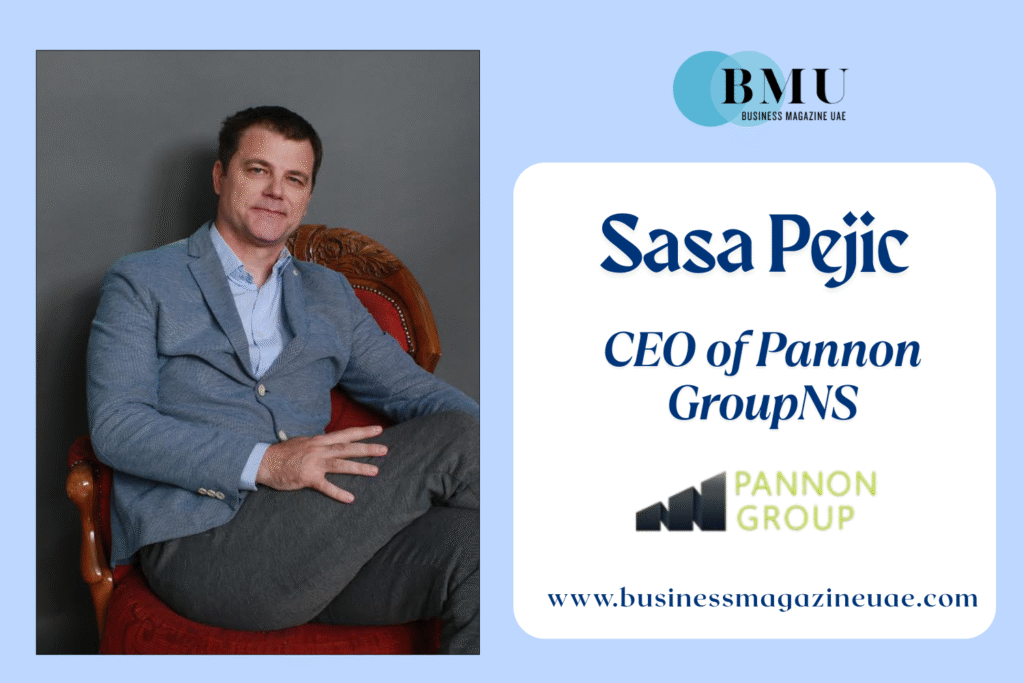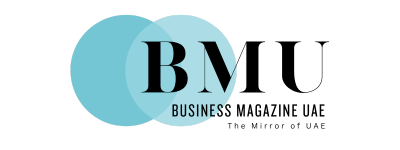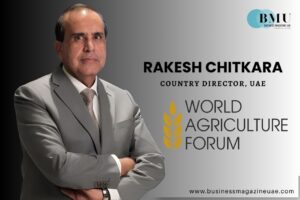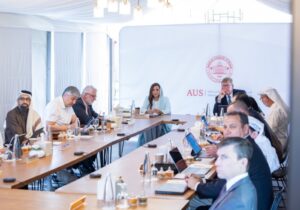
We recently had the privilege of having an insightful conversation with Sasa Pejic, Co-founder and CEO of Pannon GroupNS. As an investor and financial advisor with over 18 years of industrial experience, Sasa has been associated with the financial landscape, offering his expertise and counseling services. As a serial entrepreneur, he has successfully built and sold several startups.
Currently, at Pannon GroupNS, Sasa offers consulting services in the finance and investments landscape. As a platform offering financing, investment, and corporate restructuring services, the group has been redefining the financial landscape. With Pannon GroupNS, Sasa Pejic advocates a unique approach to the field and finance education, setting the group apart from the competition in the field.
The Beginning
Interested to learn how Sasa Pejic started his career path, we started the interview by asking, “What key moments shaped your journey to becoming CEO of Pannon GroupNS?”
Sasa Pejic shared, “The 2009 financial crisis in the world, including Southeastern Europe, was a turning point in my career. After years of working as a Risk Manager and Accountant in banking, the collapse of nearly a dozen banks, including mine, left me unemployed during my most productive years. Yet, looking back, this experience became a catalyst for my personal and professional growth, instilling in me the determination to follow my own path.
With the belief that every failure was an opportunity for a new beginning, I added several licenses and certificates to my professional experience that equipped me with additional skills and knowledge. Mentoring in the banking sector honed my leadership, strategic, and decision-making skills, empowering me to pursue entrepreneurial ventures. In 2014, using my experience in finance and banking, I co-founded Pannon Group NS, a web portal offering financing, investment, and corporate restructuring services.”
“Additionally, we have successfully exited another venture. Our team has so far completed over 2,500 expertise for individuals, entrepreneurs, and small and medium-sized enterprises (SMEs) in banking, accounting, and labor relations. This impressive success has not only strengthened my confidence and understanding of team dynamics but also developed a results-oriented mindset, preparing me to make key decisions.
Alongside my professional achievements, I am strongly committed to community engagement. I believe that individual progress is intertwined with mutual support and interaction within the wider community. My involvement in Rotary International has significantly contributed to the development of key skills. As secretary of my local club for two years, I led initiatives such as introducing chess to primary schools to foster critical thinking in children and organizing some of the first online chess tournaments over 15 years ago,” he added.
Values Guiding Sasa Pejic Through His Career Path
We asked Sasa Pejic to share more about the leadership values that guide his work in investments and business.
“It’s hard for me to emphasize a single most important leadership skill because true leadership requires a dynamic set of skills strategically applied to everyday situations. However, the current era, characterized by unprecedented speed of change and limited time for experimentation, requires a new approach to leadership. Therefore, if I had to highlight specific qualities, I would emphasize adaptability and forward-thinking resilience. In a world with less time for trial and error, a leader’s ability to communicate clearly, act with unwavering integrity, and inspire trust through honesty and empathy becomes the most important.
In my opinion, these core people-focused skills are the true drivers of effective leadership in a future that demands rapid response and unwavering conviction. Personally, I have always somehow recognized trends and opportunities in them. For example, even at a young age during my studies, I took out a student loan to buy shares on the stock exchange. And even Blockchain technology interested me back in 2015,” Sasa replied.
Trends Shaping the Dynamic Investment Market
We further asked, “What major trends are you seeing in personal income and investing today?”
Sasa Pejic explained, “In today’s dynamic economic landscape, I would highlight a few major trends shaping personal income and investment strategies, which are driven by technological advances, evolving economic conditions, and changing societal values. Persistent inflation continues to be a significant factor. People looking to protect their assets are increasingly concerned about persistent inflationary expectations and the unstable geo-political situation also makes people frustrated.
Financial power is shifting eastward, with traditional financial centers like London, Frankfurt, Paris, and New York taking on new roles, making the average person feel insecure. Additionally, the rise of artificial intelligence (AI) and automation, is transforming the labor market. Speaking of the Southeastern European region, I fear that people are not prepared for what’s coming in terms of jobs and how to work in an AI-enabled environment. The question of how the stock market will function in situations where you have AI agents making strategic decisions; will this increase competition and reduce potential returns, or will AI models lead to engaging more people toward the stock market, is quite unsure yet.
Personally, I think commodities will gain a bigger role in the medium term, given the reduction in volatility. Also, the continued growth of the gig economy and remote work options are giving individuals more flexibility in how they earn, leading to diversified income streams, along with challenges in terms of benefits and job security. In short, current trends in personal income and investing reflect a landscape of constant adjustment. Individuals are looking to increase and protect their income, despite inflation and technological changes, while investors are exploring more diverse and technology-based approaches to achieve their financial goals.”
Tailored Solutions for Clients
To understand more about Sasa Pejic’s approach towards his clients, we requested him to share how his strategies differ for local versus international clients.
Sasa Pejic mentioned, “The difference between working in the region of Southeast Europe and Serbia and with partners from other parts of the world is great. Each market has its own specificities; particularly, the financial market in Serbia is quite shallow. People are burdened by the past when their bank deposits collapse overnight. The investment portfolio of individuals in over 90 percent of cases is based on savings in banks and investments in real estate. Investing in the stock market, both locally and outside the region, is extremely small.
I read a study a long time ago that in Eastern European countries, as much as 90 percent of real estate is owned by citizens, while in Western Europe, this rate is around 40 percent. Well, the fact is that the East Europeans are still lagging behind the West Europeans. In addition, there is a big difference between continental Europe and America in the sense that people in the latter are much more enterprising. Investing in stock markets is much more prevalent, and in new types of assets like cryptocurrencies.”
“There are many strategies, including risk tolerance, comprehensive goal setting, time horizon analysis, current financial situation and cash flow analysis, estate planning consideration, and more. Although the basic strategies are the same for all markets, I adapt them to specific markets or clients. For instance, the risk tolerance strategy is totally different when we talk about clients from Southeast Europe and those from Western Europe because clients from the Southeast Europe region are less willing to take risks,” Sasa further added.
LinkedIn as a Tool of Growth over the Years
We were curious to learn the role LinkedIn played in Sasa Pejic’s career path. So, we posed the question, “How has LinkedIn helped build your personal brand and influence?”
Sharing his experience on the platform, Sasa reflects, “When I first registered on LinkedIn in 2006, it was a completely different network. I can say that LinkedIn then and now are two completely different stories. At first, it seemed a network of online resumes. However, I personally thought that the potential of this network was huge. Having business people and companies in one place, and with all their specifics, seemed fascinating to me. That’s why I tried to be present from the very beginning as much as time allowed. I can say that LinkedIn helped me a lot in developing my career and knowledge. Having almost all business information in one place, if, of course, you use it appropriately.
I joined the network extremely early and started publishing posts about what I do. I wrote mostly about cost accounting, investments, and passive income topics. That’s why I received the ‘Top Voice in Cost Accounting’ award among the 1% of creators according to SSI statistics.
LinkedIn is certainly the most powerful tool for building a personal brand and influence. By optimizing your profile and connecting with relevant networks and groups while actively engaging with content, you can establish yourself as an expert and opinion leader, which will ultimately increase your visibility and career opportunities. You can attend industry events and webinars, participate in group discussions, and share your insights to connect with like-minded people and expand your network. LinkedIn has become an indispensable platform for building your personal brand and influence in the professional world.”
The Truth Behind a Successful Brand Partnership
To learn more about Sasa Pejic’s perspective on building effective partnerships, we asked, “What makes a brand partnership truly successful?”
Sasa Pejic explained, “Brand partnerships for creators, often referred to as influencer marketing, are booming. For these collaborations to be truly successful, they need to benefit both the brand and the creator in meaningful ways, going beyond just financial transactions. In my personal experience, the most successful partnerships are formed when the creator truly loves, uses, and believes in the product or brand.
In my case, these are SaaS and B2B companies that offer new solutions related to finance, AI in finance and accounting. If the creator’s audience feels that there is a gap or that the promotion is only transactional, it breaks trust, which is the creator’s most valuable asset. In addition to the product, the overall values, ethics, and mission of the brand should align with the creator’s personal brand and the values they promote to their audience. This ensures that the partnership feels organic.
Personally, I prefer longer-term partnerships. They provide a stable income stream and allow the creator to truly integrate the brand into their content, leading to more authentic and impactful promotions. Brands also benefit from consistent exposure and deeper brand recall.”
The Art of Balancing
Constant learning is non-negotiable in taking a business forward. So, we asked, “How do you balance formal education and the real world?”
“The times we live in require approaches that include accepting the fact that without continuous improvement and learning, any progress in business is impossible. The old approaches, which said that to succeed in business, it is enough to finish school, get a diploma, and that success is guaranteed somewhere, have been overcome.
Formal education provides basic theoretical frameworks, basic knowledge, and critical thinking skills. Today, in some cases, employers give preference to candidates who have completed only formal education and are ready to learn and improve. Personally, I think that combining a dynamic approach, combining structured learning with experiential opportunities, can be effective. Adopting a mindset of continuous learning, both formally and informally, is key.
Balancing formal education with real-world experience is not about choosing one over the other, but rather integrating them to create a holistic and robust learning journey. Both are essential for comprehensive skill development, career advancement, and personal growth. Personally, I have always believed that formal education should be structured to develop more critical thinking in children, so 20 years ago with my friends, I launched an initiative to include chess as a core subject in elementary schools,” Sasa mentioned.
The Next Big Thing: Sasa Pejic’s Career Aspirations
Lastly, we inquired, “What’s the next big goal you’re working toward?”
“My next major goal is to establish broad partnerships with brands, financial institutions, B2B, and SAAS companies to creatively bridge traditional financial understanding with new technological innovations. With the help of e-books, publications, and my own tutorial collections (infographics). Through this, I aim to educate and empower individuals on topics such as AI in finance, finance, cost accounting, and passive income, helping them navigate and capitalize on the changing economic landscape,” he shared.
Follow Sasa Pejic on LinkedIn.
Find Pannon GroupNS on LinkedIn and visit their website https://pannongroupns.com/
Also Read :-
Empowering Beauty Professionals with Innovative Solutions by Laria Beauty: Alana Wambeek
Unlock the Full Potential of AI with OneX: Ali Zein’s Journey to Empowering Businesses








